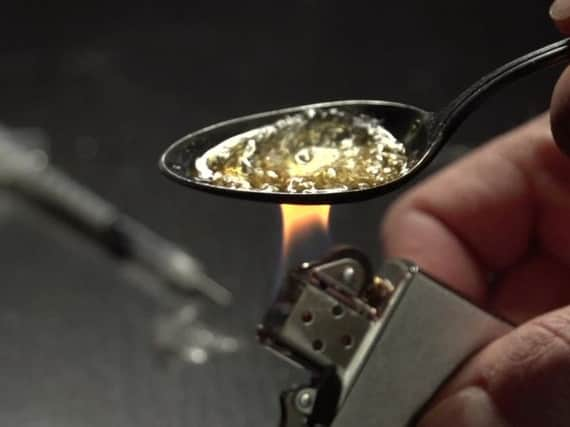Middle-aged drug addicts crisis in Preston


Public Health England data reveals there were 36 per cent more heroin and crack cocaine addicts aged 35 to 64 in 2016-17 compared to the number in 2010-11, an estimated 4,927 users compared to 3,576.
Experts believe the problem is the legacy of Britain’s heroin and crack epidemic of the 1980s and 1990s, and warn that drug abuse in later life can lead to higher risks of overdosing, as well as other major health issues like lung problems and Hepatitis C.
Advertisement
Hide AdAdvertisement
Hide AdThe figures for Lancashire echo the national findings. In England, there is now estimated to be more than 200,000 opiate and crack cocaine users aged 35 to 64.
The number rose by 39 per cent in the six years to 2016/17.
In contrast, the number of 15- to 34-year-olds using the drugs fell by 27 per cent, to 113,785.
In Lancashire, there was a 36 per cent drop in people aged 25 to 34 using crack cocaine and heroin, and a drop of 37 per cent for people in the 15 to 24 year age bracket.
Many people who have been taking heroin or crack for decades will now face a higher risk of overdose or major health problems, according to Steve Moffatt, of alcohol, drugs and mental health charity Addaction.
Advertisement
Hide AdAdvertisement
Hide Ad“Many of them have struggled to leave the drugs behind and have had really tough lives”, he said.
“They face higher risks of overdosing alongside health issues like lung problems and Hepatitis C.
“We also know that people who use heroin or crack cocaine are more likely to have an alcohol problem, smoke cigarettes and have poor nutrition.”
He added: “We can’t be fatalistic about this group - and we need to do better. People can make a change at any point in their lives if we make sure we’re there for them with the right kind of support.
Advertisement
Hide AdAdvertisement
Hide Ad“That’s why it’s really important that people know where to go for help if they need it. There’s a drug service in every community.
“It’s getting tougher to reach the people who need us. But it is totally possible for people to heal and recover with the right support. It’s never too late.”
Pete Burkinshaw, Public Health England’s Treatment and Recovery Manager, said: “Older drug users, especially those who have been using heroin since the 1980s and ‘90s, can have cumulative physical and mental health conditions that mean they are often in very poor health.
“This can make them more susceptible to illness and to drug overdose.
Advertisement
Hide AdAdvertisement
Hide Ad“It’s never too late to get treatment. Anyone using heroin and crack or are having problems with any other drugs or alcohol, whatever their age, should get professional help at their local free drug and alcohol treatment service, which will work with them to help them recover from their addiction.
“It’s also important that they are registered with a GP and are being treated for any other health problems they may have.”
Heroin and crack epidemic
Experts believe the legacy of Britain’s heroin and crack epidemic of the 1980s and 1990s is behind a rise in the number of middle-aged drug users.
Before the late 1970s, heroin had been used mainly by a small number of affluent people in London.
Advertisement
Hide AdAdvertisement
Hide AdBut when a new supply of cheap heroin opened up between Asia and the UK, the number of young users - dubbed the Trainspotting generation - soared to the hundreds of thousands.
This coincided with the development of crack cocaine, a particularly addictive form of the drug which can be smoked.
Those who became addicted at the time are now ageing.